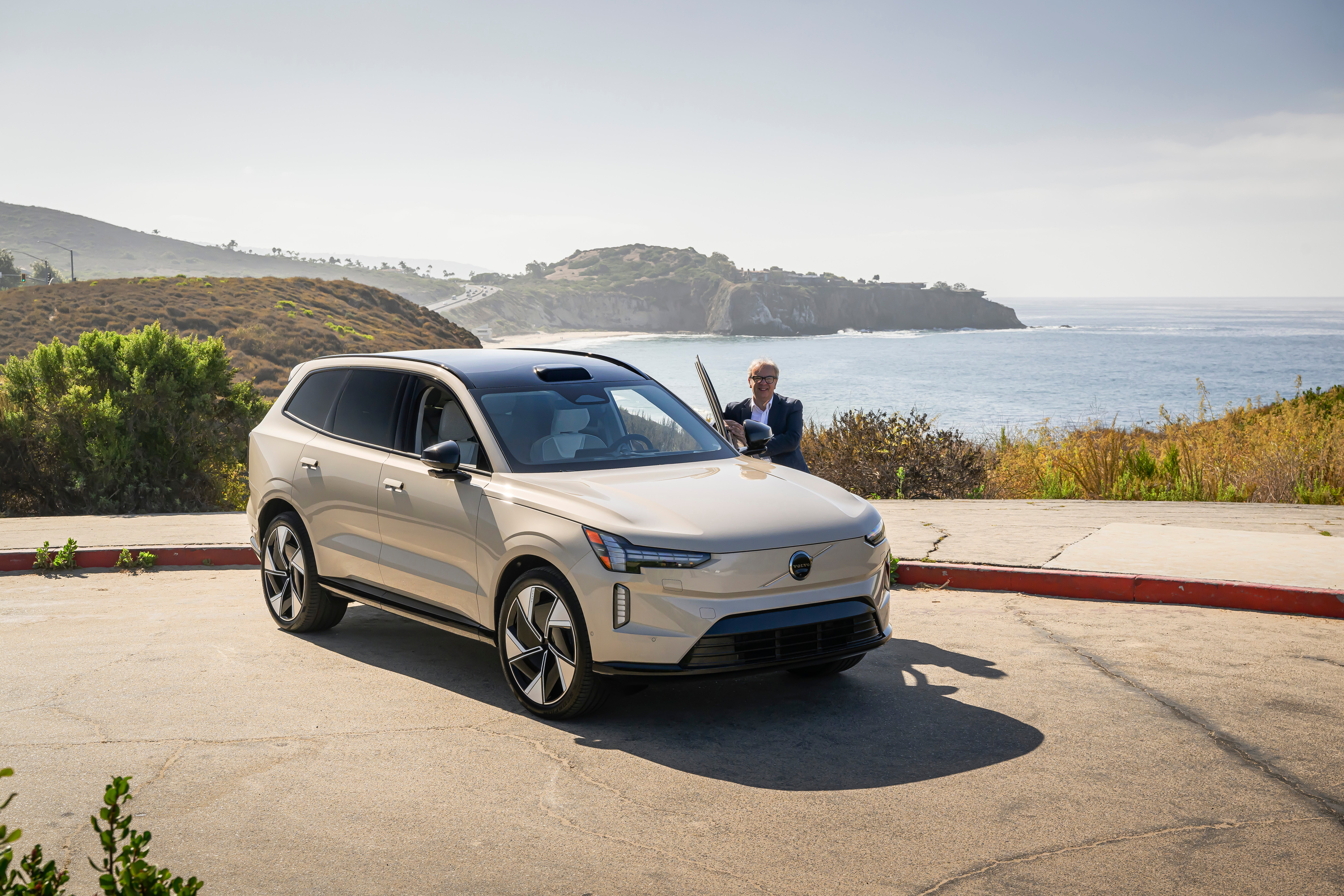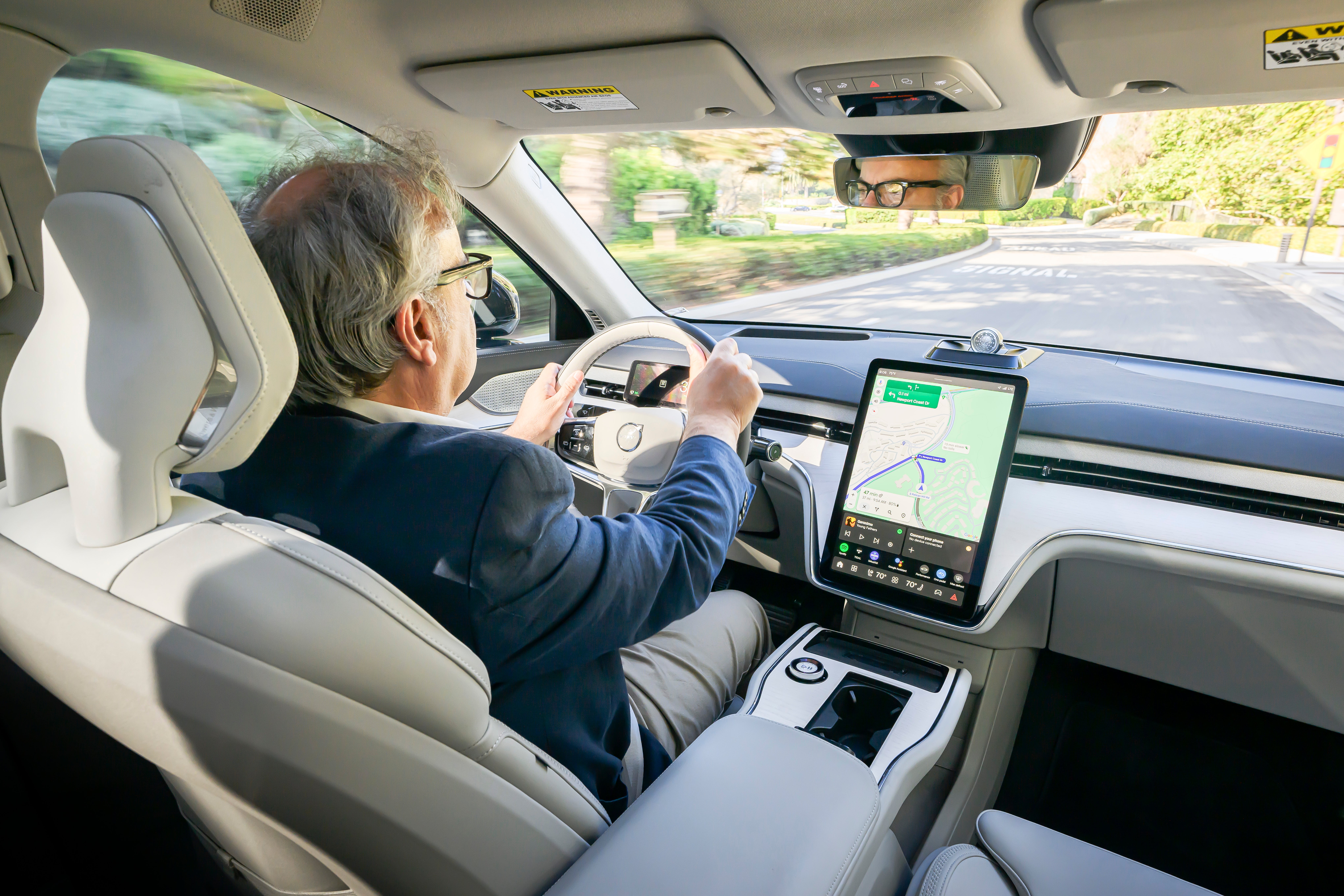Torque isn’t cheap: Volvo EX90
A long time in development, this fully electric SUV is the most expensive production vehicle to wear the famous Swedish badge. Sean O’Grady takes it on the California coastal highway and finds only one problem...


Your support helps us to tell the story
From reproductive rights to climate change to Big Tech, The Independent is on the ground when the story is developing. Whether it's investigating the financials of Elon Musk's pro-Trump PAC or producing our latest documentary, 'The A Word', which shines a light on the American women fighting for reproductive rights, we know how important it is to parse out the facts from the messaging.
At such a critical moment in US history, we need reporters on the ground. Your donation allows us to keep sending journalists to speak to both sides of the story.
The Independent is trusted by Americans across the entire political spectrum. And unlike many other quality news outlets, we choose not to lock Americans out of our reporting and analysis with paywalls. We believe quality journalism should be available to everyone, paid for by those who can afford it.
Your support makes all the difference.Quite the most intriguing thing about the new all-electric Volvo EX90 is a strange dark glass fitting between the windscreen and the roof. It’s so well integrated into the look of the car that you’d be forgiven for not noticing.
It looks rather like the “taxi” sign on a London cab when switched off, but it is in fact a “lidar”. According to my sources on the internet, it stands for “light detection and ranging”, and projects laser beams from the front of the vehicle to build up a three-dimensional light point image of what the car “sees”.
This is not currently operational as an aid to help you, or rather the Volvo, to see in the dark and avoid collisions with wayward foxes and the like, but is there to collect, record and transmit back to Volvo’s tech partners thousands, indeed millions, of reference points for the technology to become truly useful.
Read more: Volvo EX90 review: Impressive but pricey seven-seat electric SUV

For the reassurance of conspiracy theorists (assuming it’s even possible to placate them), it is only allowed to “spy” on your activities with your own permission – and for the reassurance of the rest of us, this research will help us all avoid accidents in the long run. Plus, the “defunct taxi sign” is an enjoyable talking point, as you see.
I should add that the lidar is also complemented by real-time driver support, with eight cameras, five radars and 12 ultrasonic sensors. It all helps you keep your wits about you.

Another notable feature of the EX90 is that it’s the most expensive production Volvo, just cresting the £100,000 mark. I should probably let that sink in for a moment before even trying to justify it, which I don’t think I can, entirely.
The value for money argument is that it is an awful lot of car for the money. Literally so, given it weighs about 2.7 tonnes. Much of that is down to the giant battery pack – 111kWh is impressive even for this class – and the twin motor set-up, one for each axle, delivering tremendous amounts of well-controlled torque.
There are seven seats only in the launch editions, all adult sized. The interior is every bit as luxurious as you’d be entitled to expect, with Volvo’s usual excellent sense of taste in evidence.

Of course these days it is tempered by environmental concerns, so the woollen seats are partly from recycled materials, and what passes for soft leather is actually something called “Nordico” (I kid thee not), which is, the Volvo folk tell me, composed of recycled polyethylene terephthalate (PET) bottles, bio-attributed PVC resin from Swedish and Finnish forests. So there. Another talking point, there, and I can confirm it’s very comfy, and the electric seats are heated (natch) with an adjustable squab, so you can make sure the back of your knees enjoy adequate support.
Volvo are also rightly proud of the Bowers and Wilkins sound system. I’ve got cloth ears but even I could appreciate the way they’ve managed to create different optional concern hall and studio sound effects in the cabin. Audiophiles will love it. “Cheaper”, less powerful and less fancy versions of the XC90 will follow in due course.
I wouldn’t say the EX90, for all its exquisite detailing and comfortable ride, is the match of a Range Rover, but it makes a credible challenge and is much greener (the world still awaits the all-electric Rangie and its Jaguar siblings).

But the EX90 is more refined than the older petrol or hybrid XC90 (which will soon be extensively updated and kept in production for its many fans).
On balance, whether you pick a Kia EV9, BMW iX, Audi Q8 e-tron, Genesis GV80 or Mercedes Benz EQE SUV for your bridge-bashing battery behemoth is largely a matter of taste. They’re all good, if a bit too hefty. Of course, if you’ve got no taste you can go for one of Trump-fan Musk’s models. We’ll say no more about that.
The EX90 drives superbly well, given its bulk, and the miniature networked supercomputers ensure that acceleration and cornering are suitably accomplished.

The styling is very old-school Volvo, which will delight those the company needs to transition from their XC60s and XC90s, but a disappointment for those expecting a scaled-up version of the popular EX40.
All of which just leaves me with one problematic area – the touchscreen. It all works very well, this portrait-format tablet with Google, apps and fine connectivity. The problem, of course, is that you have to do too much via the touchscreen, even with voice control, handy steering wheel buttons and a rotary dial for the audio plonked in the central console.
To adjust the door mirrors or the steering wheel you no longer have a lever or button to hand but need to navigate the menus. And if you want to signal a hazard in the motorway you have to try and stab the little red triangle icon in the corner of the screen, rather than a more obvious button on the dash.
THE SPEC
Volvo EX90 Performance
Price: £100,555 (as tested, range will start at £75,000)
Propulsion: Twin electric motor, powered by 111kWh battery
Power (hp): 510
Top speed (mph): 112
0-60 (seconds): 4.9
Economy (Wh/mile): 382
Range (miles): circa 280
CO2 emissions: 0
Of course, long-term owners will be used to this, to an extent, but it doesn’t feel intuitive or particularly safe. The more recent crop of new cars have generally moved back from touchscreen-mania and reverted to more physical controls.
The new EX90, a long time in development, feels more like it was conceived in a slightly earlier era when everyone else was getting mesmerised by the giant minimalist touchscreens in the Teslas.
Like the styling – modern and advanced as so much of it obviously is – the Volvo’s extreme touchscreenery doesn’t feel quite up to date with current trends in these areas. It feels a bit late to market, as they say in the business.

Ironically, given all that effort, Volvo has now said that its goal of being a completely 100 per cent BEV (battery electric manufacturer) by 2030 is being amended to be 90 per cent “pluggable”, which includes plug-in hybrids with petrol engines, and about 10 per cent “mild hybrids”, which is basically petrol and diesel.
Apparently, the company is listening to its customers and being pragmatic. I don’t suppose it has much option, even if it’s owned by Geely, one of the Chinese giants.
Anyway, up and down the California coastal highway for our test drive, the Volvo has the ambience of easy luxury and imbues its owner with a sense of wellbeing that verges on the smug. Very much, then, a Volvo.
Join our commenting forum
Join thought-provoking conversations, follow other Independent readers and see their replies
Comments